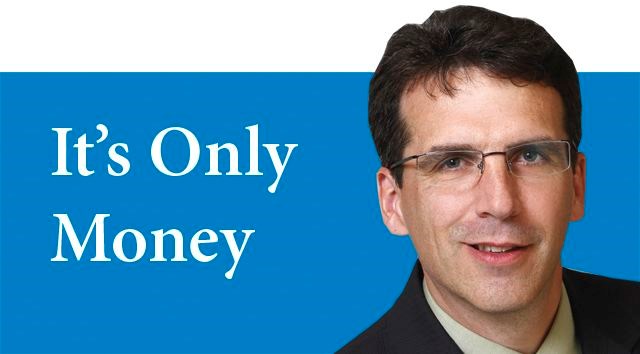Riding my bike with my daughter recently, I took a few seconds to point out all the cars and trucks parked outside a construction project we happened by.
It was just one single family residence, but there were probably six or seven vehicles there, all of them different trades-persons, all of them employed because someone was building a house. That meant they could all buy groceries and pay their own bills that month. Swimming lessons, clothes, bikes, etc.
All of this is possible because of a dream that the land developer had and the risks the bank, the builder and others involved were willing to undertake.
Now, I need to briefly discuss this borrowing of money in order to get where I am going here. So, just... toothpick your eyeballs open for a minute.
A borrower is shopping - say to buy a used roller coaster for the back yard, or maybe a house for her pet giraffe. A higher interest rate on her loan will make the loan payment higher. The key moving parts in this equation include loan repayment period, price and interest rate.
If we hold the other factors constant, but move her interest rate higher, this will increase her payments.
Where several people are bidding on the same roller coaster, the upward limit on their bids will be impacted by the interest rate. If rates rise, then a few of those buyers will fall out of the bidding, unable to afford the higher interest payment.
When bidders fall out of the market, prices fall, so, broadly, higher interest rates result in lower asset prices and vice versa.
Okay, so here we go. (More toothpicks anyone?)
What moves interest rates up or down? It is mainly an interplay of market risk appetites, strategically interfered with activities initiated by central banks.
Central bankers are constantly in the news because of their massive clearinghouse capacity to influence, and to some extent control interest rates, especially in the short term. They do so by throwing their enormous weight toward the buying or selling of short term (overnight) loans, thus impacting the supply of money and the rates the rest of the borrowers get.
For short-term markets, central banks are very effective at managing policy rates, pressuring them down (to stimulate growth) when the economy is sluggish and pressing rates higher when the economy is overheating or, at least, inching its way out of a recession.
Central banks also try to impact long-term interest rates, but their sway is often matched by nervous investors' inclination to safety.
When world-wide investors are afraid, they cling to safe assets.
Bonds, by their nature, offer a measure of safety which many investments like stocks don't offer.
The most carefully crafted fire lit under the stock markets can be smothered by a yearning for a good pair of socks and a mattress.
So, even more impactful than central banks, nervous investors are extremely adept at pressuring long term interest rates down by flooding borrowers with a supply of cash, loans, bonds, GIC's and such, willing to sit in low-return vehicles in exchange for a good night's rest.
Do you have a hole
in your sock?
In 1981 I stood in a Royal Bank lineup with another 297 or so extremely patient customers and gawked at a sign on the wall as I shuffled toward the teller. The sign frowned disapprovingly down at us, looming there on its perch - a message of doom: "Today's Prime Lending Rate: 18.5 per cent."
When I graduated university in 1990, prime had cheerfully reduced all the way down to 14.75 per cent.
After the 1995 Quebec referendum it hovered down around 7.75 per cent.
When my youngest daughter was born in 2002, prime was at 3.75 per cent.
Just after the bottom of the 2009 stock market in April that year, prime sat at 2.25 per cent, and it has not been above three per cent since then.
After this long, slow toboggan ride down the lending rate hill it is tempting to assume that we need to climb back up the hill. That rates will bounce back. That asset prices will correct harshly. That the party is over.
But the world is flat.
That is to say the interest rate world is flat-ish. (Insert lengthy legal disclaimer here because nobody really knows for sure
what some crazed dictator will
do tomorrow and how it will impact rates.)
But long-term or, better yet, longer-term... okay... really-really-long, longer-term rates are actually closer to where we are today than where our Keynesian economic predecessors took us in the '70s and '80s. And - aside from Trump's empty fiscal Twitter threats (say that five times) - there is no sign we are headed back there in a hurry.
Rates will fluctuate - and generally rise from these lows - but experts don't expect a return to previous highs, and markets are already adjusting to these expectations. And thank goodness for that.
Real estate is another crucial piece of our economy, often our most valuable asset. We feel good and spend more when house prices are rising and feel crummy, spending less when prices fall and this is greatly impacted by interest rates. But that is a story for another day.
Mark Ryan is an investment advisor with RBC Dominion Securities Inc. (Member-Canadian Investor Protection Fund). This article is for information purposes only. Please consult with a professional advisor before taking any action based on information in this article. Mark can be reached at [email protected].



